The Royal Air Force’s transition to fifth-generation air power is built on the legacy of aircraft such as the Harrier and Tornado, according to the RAF, which says lessons from those platforms continue to shape modern tactics.
Speaking during Operation Highmast, where RAF aircraft are flying alongside Italian forces on Exercise Falcon Strike, Air Chief Marshal Harv Smyth reflected on how the service’s heritage informs its approach to integrating fifth-generation systems like the F-35 Lightning.
“Flying the Harrier taught us to be exceptionally agile and unconventional in our approach. The Lightning takes that mindset and supercharges it,” Smyth said.
The RAF’s participation in Falcon Strike involves both legacy and modern aircraft operating together, which Smyth described as a fusion of past experience and present capability. He said this mix adds depth and dimension to the battlespace, reinforcing the service’s readiness goals set out in the UK’s Strategic Defence Review.
Smyth, who joined the RAF in 1991 and has flown operational missions over Bosnia, Kosovo, Iraq and Afghanistan, said the Harrier’s Short Take-Off and Vertical Landing capability redefined operational flexibility. “STOVL isn’t just something the jet can do, it enables us to show up where others can’t. That can make a difference fast, especially in terms of readiness and responsiveness,” he said.
The RAF views the F-35B’s combination of stealth, sensor fusion and vertical flight as a strategic enabler, allowing dispersed operations and rapid deployment in contested environments. Smyth noted that this builds directly on the adaptability once demonstrated by Tornado crews who mastered multi-role operations and coalition integration across decades of service.
“What fifth generation enables beyond legacy platforms is decision superiority, and that is battle-winning,” Smyth said, describing the shift from platform-based warfare to a connected, data-driven ecosystem.
He added that the principles underpinning legacy aircraft, including survivability, adaptability and mission effectiveness, remain constant. The difference, he said, lies in how the RAF now fuses those qualities with advanced digital integration.


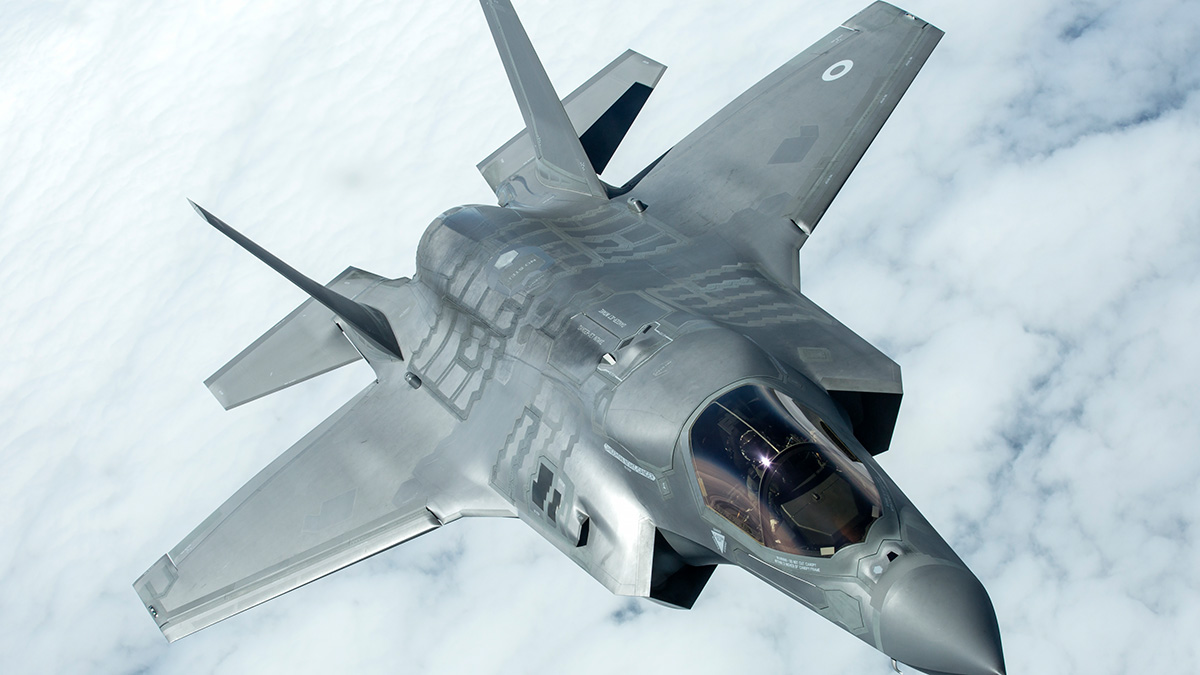
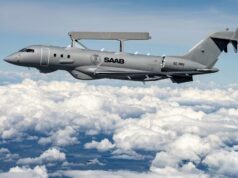
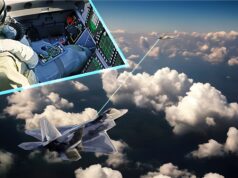
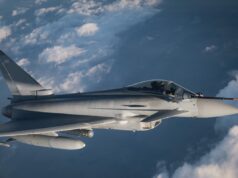
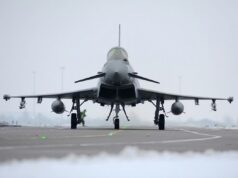
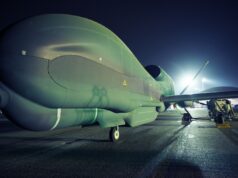

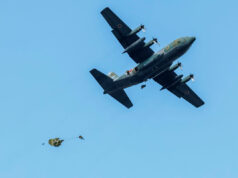


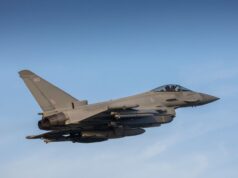

It’s good to hear we took the lessons and experiences of over 400 aircraft and “supercharged” them into 30 odd F35’s.
Agreed. A balance is required between mass and capability, and we’ve long lost it.
Also, the AVM must be lying, I keep reading here that the RAF hate the F35B and are part of an insidious plot to get the FAA and Carriers and want A.
Maybe the B isn’t so bad after all.
IRL why create a split fleet with different maintainers and spares.
If you believe RAF lack of funds and people are at the core of F35B generation rates and how spending ££££ on different training pipelines and spares stockpiles will slice that is for the birds.
Less is more
doesnt matter if out the 40 odd planes we can only fly 5 due to availability
24 are deployed if you haven’t noticed
Sitting on a carrier and being available for operations are not the same thing.
Being on the carrier is on operations
Here here to that – a lot of arm chair warriors on here . Impart of a joint services team in the day job and we have a lot of aviators both RAF and RN on the team. There has always been rivalry between those who fly different types and it was as much between those who flew Harrier regardless of service and those who flew Tornado as it was between RN and RAF. Clearly Air Marshal Smyth ias a Harrier pilot fully understands the advantage of VSTOL in terms of flexibility but also the advantage that the carrier gives in bringing you so much closer to the target in the first place and without having to depend on a large highly vulnerable runway and a conveniently located allied power who will allow you to use it in any event.
And our availability is terrible no matter how good they are. In a peer war we would really struggle
We learnt in gulf war 1 that the Tornado needed a stand off weapon rather than just relying on bombs. What’s happened to that lesson then?
It’s caught up in MoD refusing to spend in 2018 and now block IV integration to enable the weapons waiting for integration.
Which of course you already know?
The F35 will have stand off weapons, and we have standoff capability with Typhoon. FC/ASW and the SPEAR family will be the next generation of standoff weapons.
Sometime in the 2030s.
We could get a stand off option tomorrow and we really should think about it.
If we are lucky. It’s a good job all the tyrants out there have agreed to behave until we are ready for them.
But we have StormShadow capability today. F35 can operate in environments that a Typhoon simply cannot. Regardless of the weapon options available.
If you look to the past, then UK F-35 should have heavy stand off weapons plus drop tanks by now.
It’s going to take a long time for block IV and Spear3 to be ready. I remember reading that the US Marines are using GPU53 glide bombs from their F35Bs. Maybe we should look at integrating them as a stop-gap.
Would be wise but government don’t do wise. Also I do wonder if F35b could be used in woodland area’s like the old Harrier if the RAF had sufficient numbers or is it to high TEC ?
i doubt it, no room for the ramp and hard to get to 30 knots, hence light load only. Anyone for Mid-Air re-arming?
It would depend on how and where they’d be deployed. From a woodland clearing with only a square pad. The F35B’s significantly more powerful engine will likely destroy a hastily put down aircraft landing mat. If the F35 limited to only vertical take offs and landings.
However, if the aircraft has access to a straight bit of road say 150m to 250m long. Then it will have the option of doing the short rolling vertical landing’s and take-offs. Something that the analogue Harrier GR3 pilots could also do.
They’re due to announce a kind of Block IV and TR-3 interim update soon that will hopefully focus on a few weapon integrations. Should mean at least these come sooner than 2031, I would still cross my fingers, toes and everything else you can though.
That will be great for meteor integration but Spear3 has it’s own delays (at the UK end) so it would still be a while before we have a useful standoff weapon integrated with our F35Bs
Yeah agreed lack of a long range standoff weapon is it’s biggest limitations to date as has been highlighted.by Air Marshal Knighton in the Commons I believe . JSM however has already been integrated by USAF, Norway and Australia so the software fix is there . As we already operate the ship born variant as in NSM and which has a lot of commonality why do we have to yet again try and reinvent the wheel and go a separate UK route – JSM a no brainer to.me.
Not aware of JSM integration having been completed as yet?
Storm breaker is being purchased by the MoD. This will give our F35s a stand-off capability. The F35B will be able to carry 16 of them.
Do you have a source for that.
I know that the UK F35 programme have recommended the purchase but I hadn’t heard that that the MOD have green-lit any purchase.
Another US weapon.
They’re due to announce a kind of Block IV and TR-3 interim update soon that will hopefully focus on a few weapon integrations. Should mean at least these come sooner than 2031, I would still cross my fingers, toes and everything else you can though. For the UK the integrations would be Meteor and Spear 3.
For the f35 force to be Really effective HMG needs to buy
AGM-154C High altitude range of 140km or low altitude 22km ability to hit moving targets ( ships) with a 500lb BROACH warhead ( same as storm shadow), two can be carried in the internal bays and up to 6 if it uses wings hard points.
Small diameter bomb, 8 can be carried internally range 110km high altitude, 250lb warhead ability to attack moving targets
Apparently the RAF have asked but the MOD has not funded
“To acquire a more capable interim air-to-surface weapon, the UK F-35 programme has requested funding for Small Diameter Bombs,” the NAO said in its report, adding, “The MoD [Ministry of Defence] has yet to provide this funding.” July 2025.
You forgot some “Highballs” for 617 Sqdn.
Well, the RAF needs an interdiction and SEAD capability if it is to project air power. The Tornados were retired from service in the interdiction role and never replaced.
The idea that the F-35Bs would take over from Tornado.was flawed in several respects. There was never remotely.the budget to buy 138 to equip both the RAF and the FAA, ensuring an arm-wrestle over who gets what.
The few F-35Bs.we are getting have been grabbed.by the RN for the CSG. The idea they can be returned from the SCS in wartime if needed is probably fallacious, as the USN fleet commander and POTUS will no doubt insist they are needed and the CSG Commodore will say we can’t spare them just now PM, without putting the CSG at grave risk.
Even if they were available to the air force, are they what’s needed? Compared to the F-35A, the B is too short range, carries half the weapon load, is most likely slower and with a poorer rate of climb,.due to carting around its heavy lift fan, and has a pretty dismal availability rate. The A, apart from being the superior aircraft, cost about £20m less per copy, which is a considersble price difference.
So naturally the A would.be the better bet for the RAF. 12 is at least a start, should really be aiming for 72 to re–establish an interdiction wing, with a secondary nuclear capability.
The idea that it will be costly to have 2 versions in service is a bit of a stretch. We had 2 versions of Tornado in service, we do 2 versions of Wildcat training, doesn’t seem to be a big.issue IRL. Anyway, buying 12 As rather than Bs for the RAF will save about £240m, well more than enough to overcome any little niggles about cost.
When we had two versions of tornado we also had Jaguar and two versions of harrier in service for a total of 5 different front line fast jets.. generally there have always been a number of different fast jets in service.